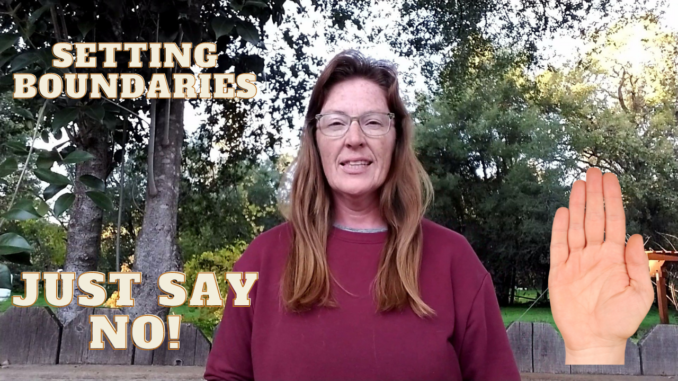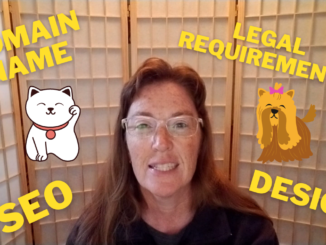
Learn how to change your attitude and set boundaries in the areas of pricing, services, scheduling, and social interaction with clients.
I’ve been a professional pet sitter since 1994. When I started out I wanted to be the best, not the cheapest. I set prices a little above average and focused on providing quality service. I’ve been successful and happy all these years in a business that works for me.
Over the years I have met hundreds of pet sitters, some of whom became trusted associates and close friends. They are smart, strong, creative business owners and pet lovers who do great work. Because of that, I am surprised at how often setting boundaries is an issue for so many in this business.
What are some common boundaries that seem difficult to uphold in the pet care business?
1) Prices
Let’s start with the reason you went into business, to make a living. Sure, you also do it because you love animals and want to help people, but the primary reason for starting a business is to make money. To do that, you need to set prices at a level that covers your expenses and allows you to profit. Doing an analysis of market rates in your area is helpful, but ultimately you should set prices based on your needs.
I can’t tell you how many times I hear from sitters struggling with setting prices, and this confuses me. The prices are what they are. Set them, and stick to them. I hear of folks giving discounts to students, to seniors, to anyone who asks for one. Why? This is a premium service business, not the Dollar Tree. Bargain hunting clients are seldom ones you want to work for. I recently heard a saying that I like, “If you chase the dollar it will run from you.” This saying has several meanings, but for me in this scenario it means if you accomodate anyone to make a buck you will find yourself working too hard for too little money. If you take all comers and agree to any conditions, you will lose control of your business and it will not serve you or your community.
2) Services
I recently got an email from a potential client requesting dog walking. She asked how much it would cost for a “quick 15 minute walk.” I was a little confused because she emailed from my website, where services and prices are clearly listed. I responded that she is in our service area, we’re happy to provide walks, and to consult our website. She replied that she had seen the prices on the website, but doesn’t want to pay that much. She thought she could pay half price for half the time. I didnt reply again because I just don’t have time for tire kickers and bargain hunters. I’m not interested in changing my services and accepting less than my minimum charge.

I have heard from many sitters that they will bend and give clients whatever they want, at whatever price they want. Whether it’s shorter visits, visits less frequently than once every 24 hours, or anything else outside of the norm. It’s a slippery slope, and these kinds of clients are seldom ones who will be easy to work for. If you give in on one thing, soon they will be asking for another, and another.
3) Schedule
I hear so many stories of clients calling or texting at all hours of the night, expecting an immediate response, and getting one. Every other business has business hours — why not yours? Part of a business structure is opening hours. Let calls go to voicemail outside of those hours, and return calls the next day.
It is also important to establish how scheduling is done. I use an app called Time to Pet and have clients schedule and pay through that. This gives the client responsibility for scheduling the right dates and times and reduces the chance of a misunderstanding or mistake on the part of the sitter. If scheduling is done by phone, text, and email, there are just too many chances for a mistake than if it is done all on one platform.
Many sitters today use an app but don’t insist that all clients use it. If clients balk at the change, they will continue to schedule in other ways, so adding the app just adds to the confusion and chance for mistakes. When you set a policy, you need to insist that everyone follow it. The system doesn’t work if it’s used only intermittently.
One of the nice things about an app is that you can set times that you offer dfferent services. That way you won’t overbook or get bookings for times you don’t cover, or for exact times. You can set it to schedule time blocks of two hours or whatever works for you.
4) Social
There is an important aspect of pet sitting that affects these decisions but isn’t talked about much. Let’s call it the social assumption. When you work in someone’s home, you see them in a very private area of their lives. You see their personal belongings, decor, signs of their daily lives. You may talk to them frequently, especially if they are home when you come by to do a dog walk or other service. They may share things with you in conversation. You may meet their other family members, friends, and kids. At some point you will come to believe you have a personal relationship with them … but you don’t.
Pet care professionals, I am now offering personalized consulting and coaching for your business!
Email info@firststreetpets.com for info.
Now, I’m not saying clients can’t become friends. I live in a small town, so I have what I would call friendly working relationships with many clients. We all shop at the same grocery store, eat at the same restaurants, and see each other walking down the street. It’s a different situation than one would experience in a larger, more metro area. Despite this, I keep things professional. I don’t make a social assumption about our relationship. Doing so can lead to unintended consequences like performing services for cheap or free, doing favors, and even more importantly being disappointed when the client doesn’t respond on the level you expect.
A humorous comparison
Let’s compare our business to others to illustrate the absurdity of not setting boundaries.
You take your car to a mechanic and they estimate your repairs at $500. You say that’s too much, my friend can do it for $100! What is their response?
You go online to order tickets for a show. The tickets cost $300. You say, I’m not going to pay upfront! What if I don’t like the show? I’ll pay after, and give the venue a hassle if I’m not satisfied with the performance. Do they let you do this?
You order a cup of coffee at a coffee house. It costs $3. You say, 20 years ago coffee cost 50 cents! Why did you raise your prices? Will they sell it to you for 50 cents?
These sound ridiculous but they all happen in the world of pet business.
I can’t tell you how many times I’ve talked with or even met a potential client, gone over all the care details, answered all the questions, then they ask about price. I think, wait, didn’t I already tell them? When I repeat the price for the service they want, they’ll say something like, “What? For DOG WALKING?” or “I’m used to paying less than half that amount.” As if being rude will coerce me into lowering my established rates. BUT apparently it works for many others in the business!
I’ve had potential clients balk at paying upfront. They try to convince me to change my policy by saying that’s what they always do with services, that’s what they did with their previous sitter. I’m free to set whatever policy I want for my business, and I take payment upfront. I don’t usually explain or rationalize my policies but I will sometimes say — and this is true — that if I did billing I’d have to hire office help and that would raise prices. For some business models, billing at the completion of work is a best practice, especially if the cost may vary like home construction. If you don’t pay, they will sue you and put a lein on your house!
Pet sitters just go into fits about raising prices, and I’m at a loss as to why. Literally every product and service on earth increases in price over time. Coffee, car repair, hotel rooms, groceries, anything. I keep abreast of local market rates and raise mine accordingly. It takes just as much time and energy to work for a high rate as for a low one, and I’ll tell you bargain hunters are often the worst people to work for.
How to change your attitude about setting boundaries? Just do it! The more you stand up for yourself, the easier it will get. You will find that you are happier and more successful in your business. You will attract and retain high quality clients.




